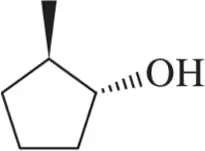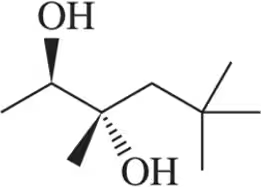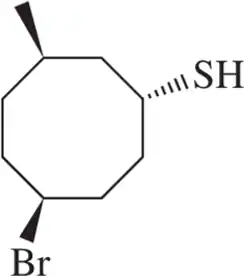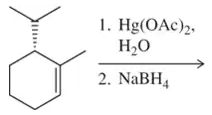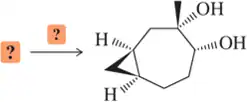 Back
Back Mullins 1st Edition
Mullins 1st Edition Ch. 13 - Alcohols, Ethers and Related Compounds: Substitution and Elimination
Ch. 13 - Alcohols, Ethers and Related Compounds: Substitution and EliminationProblem 1
Rank the ability of the following compounds to undergo an S_N1 reaction ( 1 = fastest, 5 = slowest ).
Problem 2
Provide a mechanism for the following SN1 reaction. What roles (acid/base/nucleophile/electrophile) does ethanol play in the reaction? What functional group is made in this reaction?
Problem 4a
Use oxidation numbers to determine whether the following are redox reactions.
(a)
Problem 4b
Use oxidation numbers to determine whether the following are redox reactions.
(b)
Problem 5a
The mechanism of the acid-catalyzed hydration of an alkene to make an alcohol is shown. If this reaction is reversible, draw a mechanism that justifies formation of the alkene from the alcohol under similar conditions. How do you know this mechanism is correct?
Problem 6a
Provide the IUPAC name for the following molecules.
(a)
Problem 6b
Provide the IUPAC name for the following molecules.
(b)
Problem 6f
Provide the IUPAC name for the following molecules.
(f)
Problem 7a
Draw the structure that corresponds to the name provided.
(a) (1R,5S)-5-methylcyclohex-3-enol
Problem 7b
Draw the structure that corresponds to the name provided.
(b) (2R,3R,4S)-heptane-2,3,4-triol
Problem 7c
Draw the structure that corresponds to the name provided.
(c) (2E,4S,6Z)-octa-2,6-dien-4-ol
Problem 7d
Draw the structure that corresponds to the name provided.
(d) (2R,4Z)-5-bromopent-4-ene-1,2-diol
Problem 7e
Draw the structure that corresponds to the name provided.
(e) (1S,4S)-4-isopropylcyclopent-2-enethiol
Problem 8
Label each hydroxyl group in Assessment 13.6 as primary (1°) secondary (2°) , or tertiary (3°)
Problem 9
Label each sulfhydryl group as primary (1°) secondary (2°) , or tertiary (3°)
Problem 10
Identify the substitution of carbons (a)–(d) comprising the ether functional group in the following molecules.
Problem 12
Show a mechanism for each of the alcohol synthesis reactions in Table 13.8.
<IMAGE>
Problem 13a
Predict the product of each of the following alcohol synthesis reactions.
(a)
Problem 13b
Predict the product of each of the following alcohol synthesis reactions.
(b)
Problem 13c
Predict the product of each of the following alcohol synthesis reactions.
(c)
Problem 13d
Predict the product of each of the following alcohol synthesis reactions.
(d)
Problem 14a
Suggest a reagent to carry out each of the following conversions to an alcohol.
(a)
Problem 14b
Suggest a reagent to carry out each of the following conversions to an alcohol.
(b)
Problem 14c
Suggest a reagent to carry out each of the following conversions to an alcohol.
(c)
Problem 14d
Suggest a reagent to carry out each of the following conversions to an alcohol.
(d)
Problem 15a
Suggest a reagent and a reactant that could be combined to make each of the following alcohols.
(a)
Problem 15b
Suggest a reagent and a reactant that could be combined to make each of the following alcohols.
(b)
Problem 15c
Suggest a reagent and a reactant that could be combined to make each of the following alcohols.
(c)
Problem 15d
Suggest a reagent and a reactant that could be combined to make each of the following alcohols.
(d)
Problem 16
Suggest an arrow-pushing mechanism for the following reaction. Is the hydroxyl group acting as a base, acid, Lewis base, or Lewis acid?





